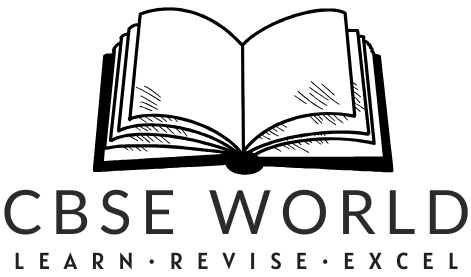Mathematics is a crucial subject that helps students develop logical reasoning, problem-solving abilities, and analytical skills. This NCERT Solutions guide for Class 9 Maths provides in-depth, step-by-step explanations for all exercises in the NCERT textbook. This guide is designed to help students strengthen their conceptual understanding while also assisting teachers in delivering high-quality instruction.
Table of Contents
NCERT Solutions for Class 9 Maths – Chapter-wise Breakdown
The NCERT Class 9 Maths textbook consists of 15 chapters, each covering fundamental concepts that lay the groundwork for higher studies in Mathematics. Below is a chapter-wise breakdown, including detailed solutions for all exercises.
Chapter 1: Number Systems
This chapter expands on the number line and explores different types of numbers, including rational, irrational, and real numbers.
- Exercise 1.1 – Introduction to real numbers, properties, and representation.
- Exercise 1.2 – Identifying rational and irrational numbers.
- Exercise 1.3 – Representing irrational numbers on the number line.
- Exercise 1.4 – Exponents and laws of rational exponents.
- Exercise 1.5 – Simplification of surds.
- Exercise 1.6 – Approximations and decimal expansions of real numbers.
- Extra Questions – Additional practice questions on number systems.
Chapter 2: Polynomials
Understanding algebraic expressions, types of polynomials, factorization, and theorems.
- Exercise 2.1 – Introduction to polynomials.
- Exercise 2.2 – Zeros of a polynomial.
- Exercise 2.3 – Relationship between coefficients and zeros of a quadratic polynomial.
- Exercise 2.4 – Division algorithm for polynomials.
- Exercise 2.5 – Factor theorem and its applications.
- Extra Questions – Important additional questions for practice.
Chapter 3: Coordinate Geometry
Exploration of Cartesian plane, coordinates, plotting points, and equations.
- Exercise 3.1 – Cartesian plane and plotting points.
- Exercise 3.2 – Finding coordinates and calculating distance.
- Exercise 3.3 – Midpoint formula and section formula.
- Extra Questions – Application-based problems and higher-order thinking questions.
Chapter 4: Linear Equations in Two Variables
Solving and graphing linear equations in two variables.
- Exercise 4.1 – Basics of linear equations.
- Exercise 4.2 – Graphical representation of linear equations.
- Exercise 4.3 – Applications of linear equations.
- Exercise 4.4 – Real-life problems involving two-variable equations.
- Extra Questions – Word problems and practical applications.
Chapter 5: Introduction to Euclid’s Geometry
Understanding the basics of geometry, axioms, and postulates.
- Exercise 5.1 – Euclid’s definitions, axioms, and postulates.
- Exercise 5.2 – Logical proofs and applications.
- Extra Questions – Advanced geometric reasoning problems.
Chapter 6: Lines and Angles
Properties of lines, angles, and parallel lines.
- Exercise 6.1 – Basic properties of angles.
- Exercise 6.2 – Properties of parallel lines.
- Exercise 6.3 – Angle sum property of triangles.
- Extra Questions – Theorems and real-life applications.
Chapter 7: Triangles
Concepts of congruence, properties, and inequalities in triangles.
- Exercise 7.1 – Congruence of triangles.
- Exercise 7.2 – Criteria for congruence (SAS, ASA, SSS, RHS).
- Exercise 7.3 – Properties of isosceles and right-angled triangles.
- Exercise 7.4 – Triangle inequalities.
- Exercise 7.5 – Applications of congruence.
- Extra Questions – Proof-based and application-based questions.
Chapter 8: Quadrilaterals
Properties and classifications of quadrilaterals.
- Exercise 8.1 – Basic properties.
- Exercise 8.2 – Midpoint theorem and its applications.
- Extra Questions – Special quadrilaterals and their properties.
Chapter 9: Areas of Parallelograms and Triangles
Understanding the relationship between different geometrical shapes.
- Exercise 9.1 – Derivation of area formulas.
- Exercise 9.2 – Applications of area concepts.
- Exercise 9.3 – Advanced problems on areas.
- Exercise 9.4 – Proof-based questions.
- Extra Questions – Additional practice on area concepts.
Chapter 10: Circles
Understanding properties of circles, chords, and cyclic quadrilaterals.
- Exercise 10.1 – Basic properties of circles.
- Exercise 10.2 – Theorems on chords.
- Exercise 10.3 – Properties of cyclic quadrilaterals.
- Exercise 10.4 – Tangents to a circle.
- Exercise 10.5 – Applications of tangent properties.
- Extra Questions – Higher-order problems involving circles.
Chapter 11: Constructions
Practical constructions using ruler and compass.
- Exercise 11.1 – Basic constructions.
- Exercise 11.2 – Construction of triangles.
- Extra Questions – Advanced geometric constructions.
Chapter 12: Heron’s Formula
Finding areas of triangles and other polygons.
- Exercise 12.1 – Heron’s formula derivation.
- Exercise 12.2 – Applications in real-life problems.
- Extra Questions – Word problems and conceptual applications.
Chapter 13: Surface Areas and Volumes
Mensuration concepts related to different 3D shapes.
- Exercises 13.1 to 13.9 – Step-by-step coverage of cubes, cylinders, cones, spheres, etc.
- Extra Questions – Advanced problems and real-life applications.
Chapter 14: Statistics
Data handling, representation, and analysis.
- Exercises 14.1 to 14.4 – Collection, representation, and interpretation of data.
- Extra Questions – Practical applications and probability-based problems.
Chapter 15: Probability
Basic probability concepts and real-world applications.
- Exercise 15.1 – Theoretical and experimental probability.
- Extra Questions – Word problems based on probability concepts.
Final Thoughts
Practicing NCERT solutions is crucial for Class 9 students to build a strong foundation in Mathematics. These solutions, combined with additional practice problems, will help students master the subject and excel in their exams. Teachers can use this guide to ensure comprehensive learning outcomes.
Start practicing today and strengthen your Mathematics skills!
